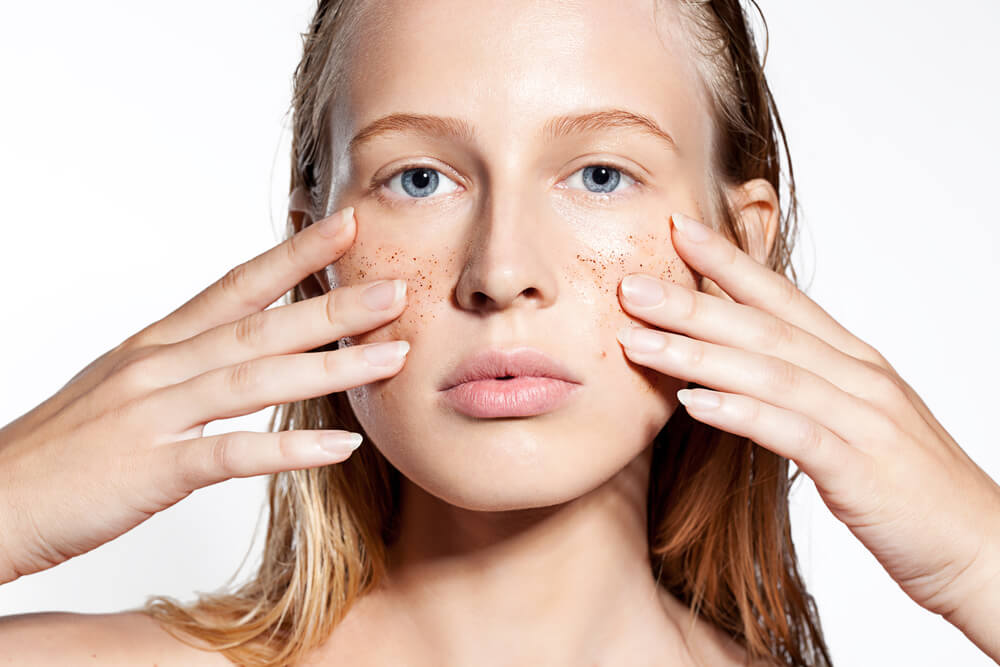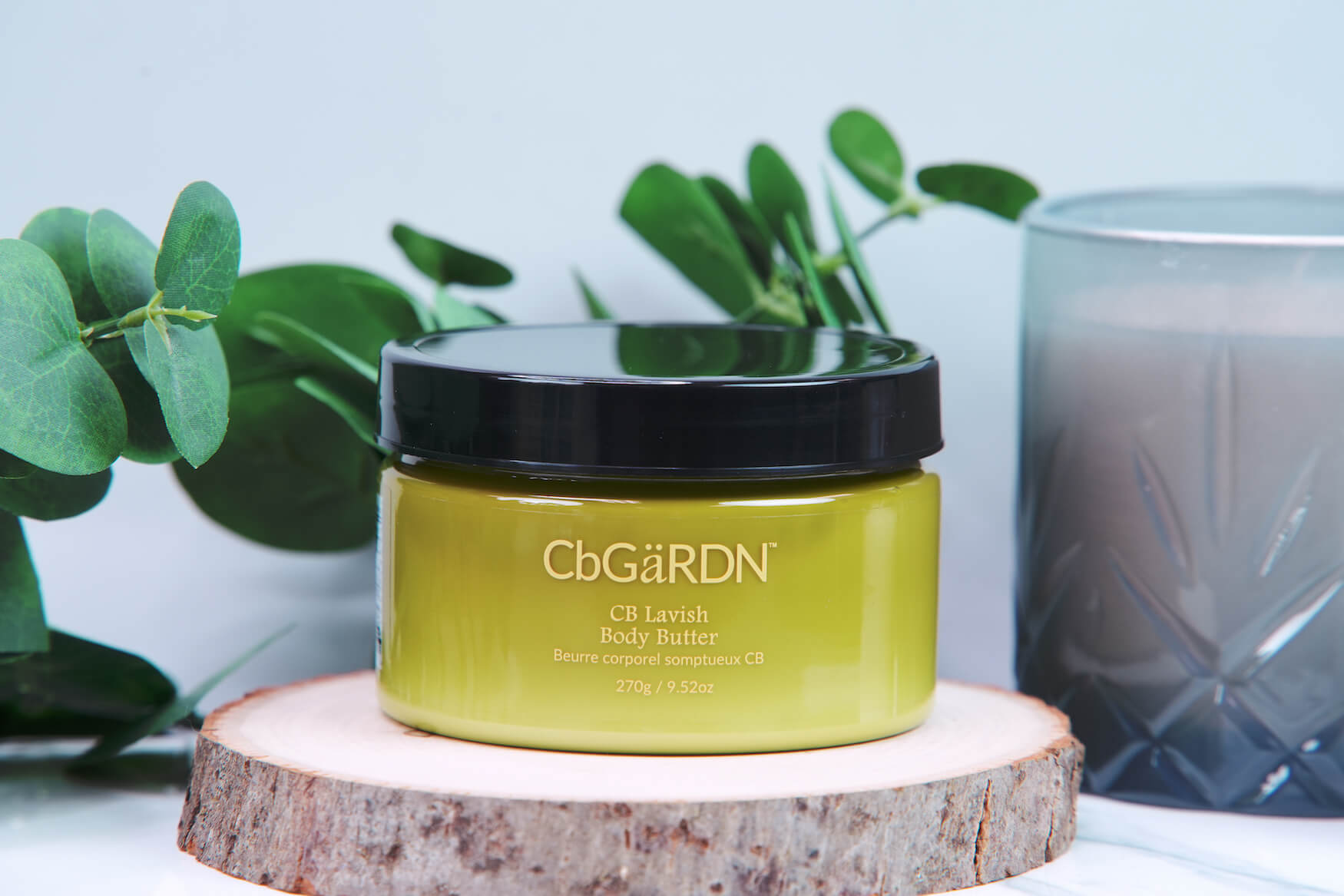Published: March 30, 2024

Exfoliation is one of the essential basics of skincare. If you want your skin to look its best, it’s a must, especially once you start to age. If you regularly exfoliate your skin, you’ll be removing the rough and dull layer of dead skin cells on your skin’s surface, allowing the cells below – the younger and fresher ones that look smoother and brighter – to show through. It can instantly give your skin a gorgeous glow.
The downside to exfoliation is that things can easily go wrong. Choose the wrong method to exfoliate your skin and you could end up suffering from the symptoms of over-exfoliation, which can take several months to heal from.
So, while exfoliation is crucial, it’s also important to make sure you’re doing it correctly. Read on as CBGärdN shares seven safe ways to exfoliate your skin!
1. Scrubs

Scrubs were probably your first foray into the world of exfoliation. They’re easy to use and provide instant results. Not only does the skin usually look smoother and brighter after a scrub has been used, but it also feels so much softer.
Scrubs work by physically sloughing dead cells off the skin. In order to do this, they need to contain an abrasive ingredient, such as salt or sugar. Although slightly too abrasive for the face, these ingredients work beautifully on the thicker and tougher skin on the body. This is why the CB Essential Body Scrub boasts salt as its main ingredient. It’s joined by vitamin E and nettle leaf extract, which will enhance the feeling of softness provided by the salt.
Can scrubs be used to safely exfoliate the face too? Yes, although it depends on the scrub that you use. Some can cause more harm than good. To err on the side of caution, exfoliate your face with the next method on our list instead…
2. Gel Peels

Just like scrubs, gel peels are a form of physical exfoliation. However, they don’t feel abrasive when applied to the skin. Instead, as they’re massaged into the skin, they adhere to dead skin cells. This causes the gel to clump up, after which it should be rinsed off, removing the product as well as the dead skin cells that it has attached to.
Gel peels are an innovative way to exfoliate, with many formulas featuring an array of other beneficial ingredients too. The CB Microexfoliant Peel is infused with glycerin, a super-hydrating humectant, as well as nettle leaf extract – our signature ingredient at CBGärdN. It’s brimming with antioxidants, which will fight the appearance of free radical damage to leave your skin looking deeply radiant.
3. Alpha-Hydroxy Acids
Let’s move on to chemical exfoliants. These can be divided into two categories, with alpha-hydroxy acids (AHAs) being the first. AHAs work by loosening the gluey bonds that keep dead skin cells attached to the skin’s surface. This allows those cells to then be shed. It’s a very effective and surprisingly gentle way to exfoliate the face.
Although many people may be intimidated by the thought of exfoliating with acids, each AHA can actually be traced back to a natural source. Glycolic acid, for example, comes from sugarcane while mandelic acid is derived from almonds.
The downside to exfoliating with AHAs is that in order to reap the rewards, you need to make sure that you’ve chosen the right formula and concentration for your skin. Start off with something mild and gentle so that you can gradually build your skin’s tolerance up.
4. Beta-Hydroxy Acids
The main difference between AHAs and beta-hydroxy acids (BHAs) is that AHAs are water-soluble and BHAs are oil-soluble. This basically means that BHAs are able to pass through the layer of sebum on the skin’s surface, allowing them to delve deeper into the pores than AHAs can.
The main BHA used to exfoliate the face is salicylic acid. It originates from willow and poplar trees, although modern-day skincare contains synthetic forms of the ingredient.
It’s worth mentioning that BHAs aren’t for everyone. If you have oily, acne-prone skin, then using a BHA exfoliant would be a great move. However, if your skin is dry or sensitive, BHAs would likely only exacerbate the skin problems you’re dealing with.
5. Clay Masks

Although clay isn’t as powerful an exfoliant as a scrub or hydroxy-acids, it’s still a great way to gently exfoliate your skin. Clay works by absorbing any excess oil that’s in the pores while also drawing out impurities. It leaves the skin looking fresher, clearer, and brighter.
One way to maximize the effects of clay when you’re exfoliating is to involve the use of heat. This leaves the pores feeling relaxed and more elastic. As a result, the clay is then able to remove even more impurities.
With that said, carrying out a facial steam while masking can be a time-consuming process. One way to simplify this is by opting for a thermal clay mask, such as the CB Göld Purifying Heating Mask. As you massage this mask into your skin, you’ll feel it gently heat up, enabling the clay to get the job done quickly and efficiently. What makes this mask even more appealing is its intense antioxidant content. It boasts a long list of antioxidant-rich botanicals that will boost your complexion in multiple ways.
6. Dry Brushing
Dry brushing is an exfoliation technique that dates back thousands of years. From traditional Chinese medicine to the Ancient Egyptians, its roots are spread all around the world.
What is dry brushing? It involves lightly brushing the skin with a special brush that has soft bristles, which won’t cause any damage. Instead, the bristles gently dislodge dead skin cells, allowing them to be swept away. This is why dry brushing is always done before a shower, so that any dead skin cells can then immediately be removed.
Although dry brushing is most commonly used as a method to exfoliate the body, there are also dry brushes available that can be used on the face. These have even softer bristles to accommodate the fact that facial skin is much more delicate than the skin on the body.
7. Exfoliating Gloves
Exfoliating gloves are somewhat similar to dry brushing, in that it involves rubbing an abrasive material over your skin. However, the gloves, as you can tell from their name, fit over your hands. This makes them much easier to use than a dry brush since all you need to do is gently rub your gloved hands over your skin.
Most exfoliating gloves have been designed to be used in the shower. The skin needs to be wet before it’s exfoliated, and the gloves also need to be damp. The best part is that these gloves can be used on both the body and the face – you won’t need to have separate pairs of gloves for each.
Unlike loofahs and exfoliating sponges, which you won’t find on this list because of how they’re known for harboring bacteria, exfoliating gloves are much easier to clean. This makes them much safer for the skin as you won’t be exposing your skin to bacteria each time you exfoliate.
How Often Should You Exfoliate Your Skin?
Now that you’ve been inspired by all of these methods of exfoliation, you’re probably eager to get started. However, even though exfoliation may instantaneously give you a softer and more radiant complexion, it’s important not to go overboard. Exfoliate too often and you’ll only end up damaging your skin.
How often you exfoliate, particularly when it comes to your face, should be based on your skin type. If your skin is dry, then this means that it’ll be more vulnerable to damage. As a result, you’ll only need to exfoliate it once, or maybe twice, a week. On the other hand, if your skin is oily, you’ll need to exfoliate a little more often to prevent clogged pores and breakouts. Two to three times a week should suffice. Combination skin would sit somewhere in the middle of the two, while those with sensitive skin may only need to exfoliate once every 7-10 days.
Since the skin on the body is thicker and tougher, it can be exfoliated slightly more frequently than the face. However, again, the body can be over-exfoliated too, so practice caution. If you’re unsure of how often to exfoliate, start off on the low end of the scale and gradually increase this if your skin is responding well.
Post-Exfoliation Care

Although exfoliation is necessary in order to remove dead skin cells, those dead cells were also helping to strengthen your skin’s natural protective barrier. Without them, your skin will temporarily be more vulnerable to dehydration and environmental damage.
To prevent this, it’s important that you never leave your skin bare after exfoliating it. As soon as you’re done, follow up with a moisturizer of some sort. This will compensate for the reduced barrier function that you’ll be experiencing by forming its own layer over the surface of your skin.
For the skin on your body, the CB Lavish Body Butter is the perfect follow-up to exfoliation. It’s packed with moisturizing and hydrating ingredients that will leave your skin feeling smoother and more supple.
When deciding what to use after exfoliating your face, consider the time of day. If you’ve exfoliated in the morning, sunscreen is even more essential. This makes the CB Multi-Active Moisturizer With SPF 30 a great choice. Not only will it deeply moisturize your skin, but it will protect against sun damage too.
If you’ve exfoliated in the evening, consider treating your skin to the CB Night Renewing Creme. With shea butter, plant proteins, sunflower seed oil, and a variety of antioxidants, it will give your skin everything that it needs to ensure that you wake up with a face that looks luminous.
Exfoliate to Perfection With CBGärdN
If you’re new to exfoliation, it’s worth experimenting with the above techniques. Although they all have the same end goal in terms of removing dead skin cells, they each work in slightly different ways. The best method for you will depend on your skin type and skincare habits. So, spend some time trying out various forms of exfoliation so that you can make the best decision for your skin.
